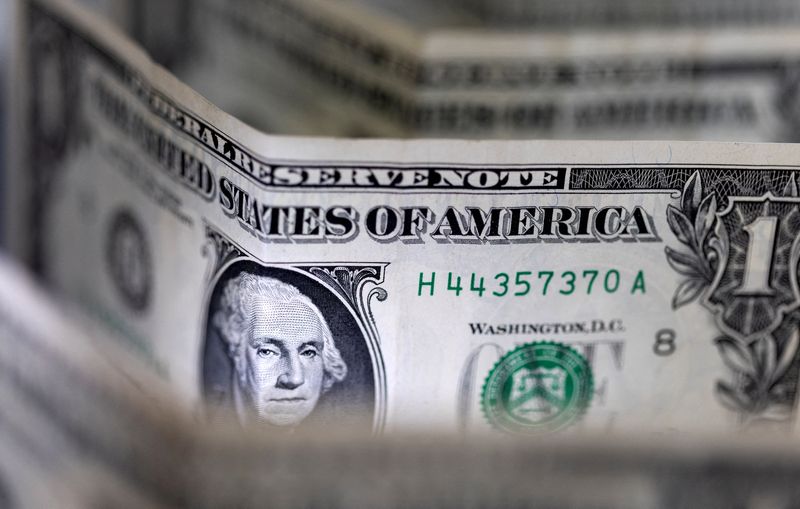Forex
Dollar edges lower, but remains supported by economic resilience


© Reuters
Investing.com – The U.S. dollar slipped lower during early European trading Thursday, but remained near a one-month high after robust U.S. retail sales data spurred more doubts over early rate cuts by the Federal Reserve.
At 04:20 ET (09:20 GMT), the Dollar Index, which tracks the greenback against a basket of six other currencies, traded 0.1% lower at 103.107, after reaching 103.69 on Wednesday for the first time since Dec. 13.
Resilient U.S. activity boosts dollar
The dollar received a boost overnight after U.S. came in stronger than expected, providing support for recent comments from a number of Fed officials that the central bank will keep rates higher for longer.
There is more U.S. data to digest Thursday, including weekly , and for December, as well as the for January.
U.S. economic activity has tended to surprise with its resilience, providing another reason for policymakers to move slowly.
Data from the U.K., released on Wednesday, showed that the rate sped up for the first time in 10 months in December. The next U.S. release is scheduled for Feb. 13.
“Investors will probably want to wait for this release before, for example, looking to rebuild short dollar and long risk positions,” said analysts at ING, in a note.
Sterling supported by sticky inflation
In Europe, rose 0.1% to 1.2685, continuing Wednesday’s rally after data showed inflation unexpectedly accelerated in December, reinforcing expectations the will be slower to cut rates than its peers.
“The inflation data also helped GBP/USD hold support at 1.2600 yesterday and 1.26-1.28 looks a likely near-term range until the broader dollar trend resolves itself,” ING added.
traded largely unchanged at 1.0880, after bouncing from a one-month low on Wednesday following ECB President pointing to summer as the most likely time for the central bank’s first interest rate cut, later than market expectations for a spring cut.
Yen awaits key inflation data
In Asia, traded 0.2% lower to 147.84, with the yen just above a more than one month low ahead of key data due on Friday, which is expected to show a sustained decline in inflation.
The reading is expected to provide the with little impetus to begin tightening its ultra-loose policy, which bodes poorly for the yen.
traded largely flat at 7.1964, after the yuan sank to its lowest level in nearly two months.
The outlook for the yuan remained dour, as the PBOC grappled with sluggish growth and limited headroom to keep supporting the currency.

 Forex3 years ago
Forex3 years agoForex Today: the dollar is gaining strength amid gloomy sentiment at the start of the Fed’s week

 Forex3 years ago
Forex3 years agoUnbiased review of Pocket Option broker

 Forex3 years ago
Forex3 years agoDollar to pound sterling exchange rate today: Pound plummeted to its lowest since 1985

 Forex3 years ago
Forex3 years agoHow is the Australian dollar doing today?

 Cryptocurrency3 years ago
Cryptocurrency3 years agoWhat happened in the crypto market – current events today

 World3 years ago
World3 years agoWhy are modern video games an art form?

 Commodities3 years ago
Commodities3 years agoCopper continues to fall in price on expectations of lower demand in China

 Economy3 years ago
Economy3 years agoCrude oil tankers double in price due to EU anti-Russian sanctions





















